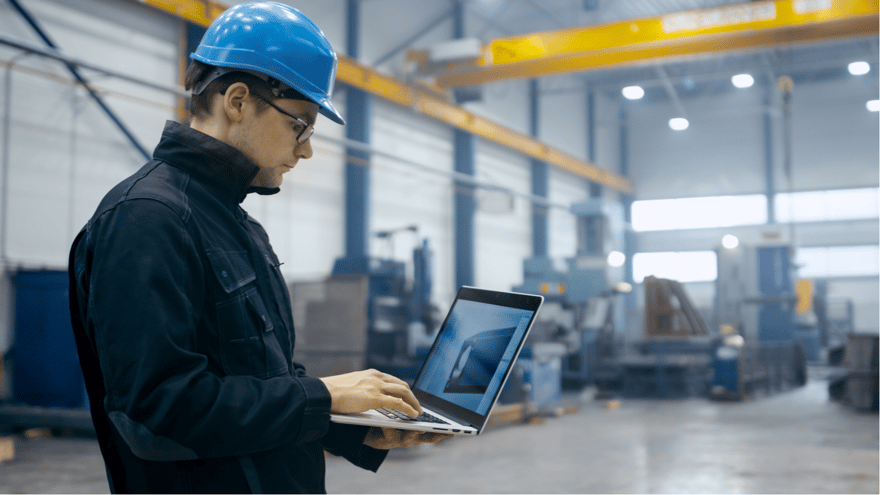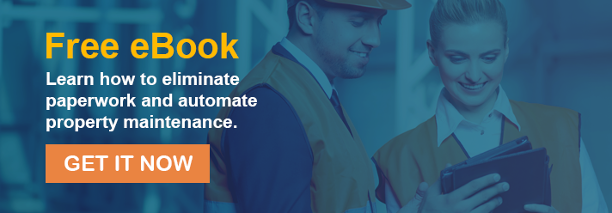Are you a company or business with a constant struggle managing equipment and employees?
Do you need a solution to these issues?
Organizing these business struggles just got easier.
It’s one thing to know a solution; it’s another to implement it.
But implementation comes at a cost.
What cost?
The cost of wrongfully implementing the right solutions to problems.
This article focuses on how to evaluate, implement and optimize a Computerized Maintenance Management System, or CMMS, into your business practices.
Maintenance Can Be Hard Sometimes
Maintenance strategies have changed dramatically over time.
The shift in the understanding of how preventive maintenance can extend the life of assets, increase productivity, improve overall efficiency, and reduce maintenance costs has led to a change in the way companies maintain their equipment.
Tools to manage maintenance workflows haven’t always kept up with the demands of growing businesses.
In the past, most teams relied on Excel spreadsheets, pen, and paper, or legacy maintenance software to get the job done.
But these approaches don’t cut it anymore as competition in the market increases and teams face higher production quotas.
Today, maintenance teams are under pressure to maximize production while reducing costs, as well as maintaining good employee morale.
A Computerized Maintenance Management System can help you with all of these things. It helps you schedule, organize, track and optimize your maintenance with just a few clicks.
Evaluating And Implementing A CMMS Software
Create A Team For The CMMS
The selection of CMMS software should be started with the help of a team.
The members of the team should include staff that will be responsible for choosing and implementing the system.
The team members should include people involved in maintenance, accounting, inventory/purchasing, and upper management.
Setup Necessary Criteria And Goals
After the goals and criteria are decided upon by the team, the team should then begin identifying the requirements for each module.
For example, when it comes to Preventive Maintenance (PM), the necessary criteria may be that the system can schedule PMs for all assets, record PM work performed on those assets, and generate reports for trending parts usage.
Always Have Standards
Once the management software has been selected for an organization, the planning stage begins.
The organization should identify and detail all the data points that would be useful to capture for reporting or management purposes.
From there, Computerized Maintenance Management System naming conventions and standard operating procedures (SOPs) should be developed.
These standards and guidelines should be published in a location that’s accessible to all relevant staff.
Some of the most important factors that affect the success of an ongoing CMMS are consistency and data input.
Consistent data input enables you to find accurate information when needed, which is crucial for upper management to make informed decisions.
Furthermore, consistency determines whether the system can effectively manage processes.
Additionally, providing maintenance staff with clear guidelines on how to input data helps eliminate inconsistencies.
Inconsistencies within a Computerized Maintenance Management System disable it from accomplishing its intended use.
In this case, the CMMS was working against the company rather than for it.
Effective management of the CMMS is needed to ensure that the system is running smoothly.
Training Is Important
Before staff begins using a CMMS, they should be trained.
Training users thoroughly helps provide consistent and reliable data.
Many providers provide access to online videos for training purposes, live virtual training, or on-site training.
Implementation Is A Huge Part Of The Plan
Implement Software
Technical requirements of the Computerized Maintenance System should be coordinated with company IT departments and representatives from the CMMS provider before installation takes place, or users’ login to the system for the first time.
Standards compatible with on-premises or cloud-hosted needs should be followed during installation, and a process in place to prevent data loss.
There are often opportunities to integrate CMMS with other systems or technologies.
One of these is condition monitoring sensors, which can be used to monitor machinery and equipment.
Another option is ERP software, which may be used to track inventory and other data.
It is crucial that the CMMS selected will integrate well with these systems.
Evaluate Progress
Upon successful implementation and training, companies would see benefits.
Work order backlogs should be reduced, unplanned equipment breakdowns should be eliminated, and overall productivity should be going up.
Goals the team developed for CMMS should be progressing at a rate commensurate with its duration of use.
Ensure To Always Perform A CMMS Audit
If companies are not experiencing the level of benefit they hope for from their CMMS, an audit can prove useful.
Audits reveal critical information about all software features--even ones that aren’t offered or that may be included in a more modern or robust program.
For example, organizations that are using an efficient (yet older) CMMS, but want to expand capabilities, should look at enterprise asset management software.
EAM software has more advanced features and can manage the lifecycles of multiple sites and assets.
Consider Restructuring
If the maintenance department has determined that they are using their CMMS or EAM system to its fullest and initial goals haven’t been accomplished, this signals a red flag.
It may be time to re-evaluate the organizational structure. Is the maintenance department as efficient as it can be?
Are there additional or more focused job roles needed, such as maintenance planners and schedulers?
Does the staff have a workload that is too heavy, too light, or just right?
Consider how well the team works together and obtain feedback whenever possible. Involve staff in key decisions.
Assemble A New CMMS Team
One tactic that can prove useful is continually re-evaluating software systems as staff changes occur.
For companies with high turnover rates or many employees retiring back-to-back, this may be done more frequently.
Selecting a CMMS/EAM system can be difficult, especially if the business is new to this type of software.
One easy way to determine if a re-evaluation would be helpful is to identify the group of people involved in the selection of the current system.
If most of those individuals are no longer with the team, it may be time to re-evaluate the software.
Over To You
Managing your maintenance operations and choosing a vendor is a huge task.
You need to keep up with the fast pace of business and growing demands, as well as ensure that things are being properly maintained.
Having a Computerized Maintenance Management System (CMMS) can help you organize your processes and streamline them so you can concentrate on pressing business issues.




